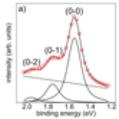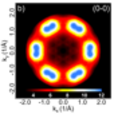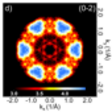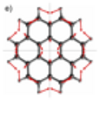Orbital Imaging by Angle Resolved Photoelectron Spectroscopy: From Basic Principles to High Resolution Experiments and Limitations
03.08.2017Dr. Achim Schöll, Universität Würzburg SFB-Colloquium in SE2 at 16:15
In recent years angle-resolved photoelectron spectroscopy (ARPES) has emerged as a particularly powerful tool for the imaging of orbitals [1,2]. In this talk I will briefly introduce this technique and discuss its prospects and main limitations.
The imaging of orbitals in momentum space by ARPES has been applied in several instances, e.g. to show hybridization at interfaces [3], the resulting band dispersion [4] and many particle effects [5,6]. By retrieval of the phase information, which can be done by mathematical algorithms [7] or by experiments with circular light polarization [8] orbitals can also be reconstructed in real space and in three dimensions [9].
In particular by using state-of-the-art momentum microscopes with high energy resolution in combination with synchrotron radiation orbital imaging by ARPES can provide unprecedented insight into the properties of molecular materials. For example, photoelectron momentum microscopy with high energy resolution allows imaging of molecular orbitals with resolution of vibronic modes [10] and thus provides unique information for the analysis of the coupling between electronic and vibronic excitation.
Limitations of the technique are mainly imposed by the plane wave final state approximations. As I will demonstrate, this is not sufficient for certain experimental conditions, three dimensional objects, or if scattering cannot be neglected. In such cases more elaborated calculations such as time-dependent DFT [11] or the Independent Atomic Center approximation can provide a more exact description of the ARPES data.
The analysis of matrix element effect allows subtle insight into the electronic properties of molecular materials, solids, and interfaces. As one example, for molecules adsorbed on metal surfaces, the hybridisation of molecular with metal states can be identified [3], which leads to an increased lateral band dispersion at the interface. The involved charge transfer into the molecules results in some cases in a Kondo effect even for molecules without an intrinsic magnetic moment [6]. Additional information on the relevant involved electronic states may be provided by the analysis of the ARPES intensity patterns.





Figure 1: a) Energy distribution curve recorded for a monolayer of coronene on Au(111). The spectrum was fitted by a vibrational progression consisting of three equally spaced Voigt peaks. Photoelectron momentum maps of the HOMO of coronene/Au(111) recorded at the energy of the (0-0) peak (b) and of the vibronic side bands ((c) and (d)). e) Illustration of the Ag-mode responsible for the sidebands. (from [10]).
References
[1] - P. Puschnig et al., Science 326, 702 (2009). [2] - M. Dauth et al., PRL, 107(19) (2011).
[3] - J. Ziroff et al., PRL 104(23), 233004 (2010).
[4] - M. Wießner et al., Nature Comm. 5, 4156 (2014).
[5] - A. Schöll et al., Science 329,303, (2010).
[6] - J. Ziroff et al., Reinert, PR B, 85(16) (2012).
[7] – D. Lüftner et al., PNAS 111, 605 (2014).
[8] - M. Wießner et al., Nature Comm. 4, 1514 (2013).
[9] – S. Weiss et al., Nature Comm. 6, 8287 (2015).
[10] – M. Graus et al., PRL 116, 147601 (2016).
[11] – M. Dauth et al, PRL 117, 183001 (2016).


